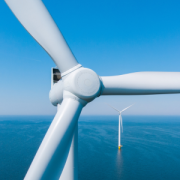In this Advisor, Rafael Sarda cautions that large-scale renewable energy projects should be planned and implemented with biodiversity considerations embedded, so that one environmental goal is not sacrificed for another. Here, he focuses on wind farm development in two biodiverse locations: marine protected areas, such as EU Natura 2000 sites, and the Mediterranean Sea.
Considering Marine Protected Areas
One extremely important consideration for offshore wind farm development is marine protected areas. This includes Natura 2000 sites, a network of core breeding and resting sites for rare and threatened species that stretches across all 27 EU countries (and beyond).
Current EU guidance on wind-energy developments states that when offshore wind projects, whether located inside or outside a Natura 2000 site, are likely to have a significant effect on sites connected to Natura 2000 areas, developers must: (1) pre-assess the relationship(s) between the wind farm and the marine projected area, (2) conduct an appropriate assessment of the site’s conservation objectives to know whether the project will affect the site’s integrity, and (3) explore whether the project is in the public interest based on findings.
EU guidance clearly states that every project must be evaluated on these three areas. Today, offshore wind farms in the German North Sea serve as an example of successful site selection incorporating marine use change.
Clearly, the EU has excellent intentions when it comes to protecting its sea spaces. The European Commission states that spaces designated for offshore energy exploitation must be compatible with biodiversity protection, incorporate socioeconomic consequences for sectors relying on the good health of marine ecosystems, and integrate other uses of the sea as much as possible.
But time is running out, and industry demands to accelerate offshore wind farm projects may impede the ability of local governments to conduct appropriate assessments regarding impacts on marine protected areas.
Considering the Mediterranean Sea
Apart from pilot projects in France, there are currently no offshore wind farms in operation in the Mediterranean. However, that situation is likely to change, as maritime spatial plans (MSPs) have already been published, raising concerns about possible effects on marine wildlife and ecosystems already being affected by activities like commercial fishing, cargo ships, recreational watercraft, and aquaculture.
Of great concern is the fact that the narrow continental shelf and steep bathymetry in many parts of the Mediterranean mean that most offshore wind projects will need to be developed close to the coast, where there is strong wind power. Unfortunately, this area has a large number of marine protected areas, making it extremely difficult to balance wind-energy needs with biodiversity goals.
For example, Spain has almost 3,100 miles of coastline. The offshore wind industry is understandably interested in making the Iberian Peninsula its European hub, and the Spanish government is eager to use wind energy to help it transition away from fossil fuels.
Recently, an area off the Spanish coast was opened to the offshore wind industry for development. Six companies have proposed projects to develop 1 gigawatt of wind-sourced electricity in this area, designated as LEBA-1.
Some of the companies are established corporations with stated sustainable policies; some are new companies with no mention of sustainability on their websites. This is important because LEBA-1 is completely surrounded by marine protected areas. Some of these areas are the most biodiverse in the Mediterranean Sea region. Without careful consideration of potential ecosystem disruption and biodiversity concerns, an influx of offshore wind farms in this location could be environmentally disastrous.
Avoiding that disaster requires an emphasis on awarding project permissions to companies with: (1) a strong understanding of how the ocean affects companies and companies affect the ocean and (2) a commitment to corporate sustainability that includes meeting business goals without compromising the ability of natural systems to provide the resources and ecosystem services on which our well-being depends.
[For more from the author on this topic, see: “What Floating Offshore Wind Farms Tell Us About Biodiversity Realities.”]



